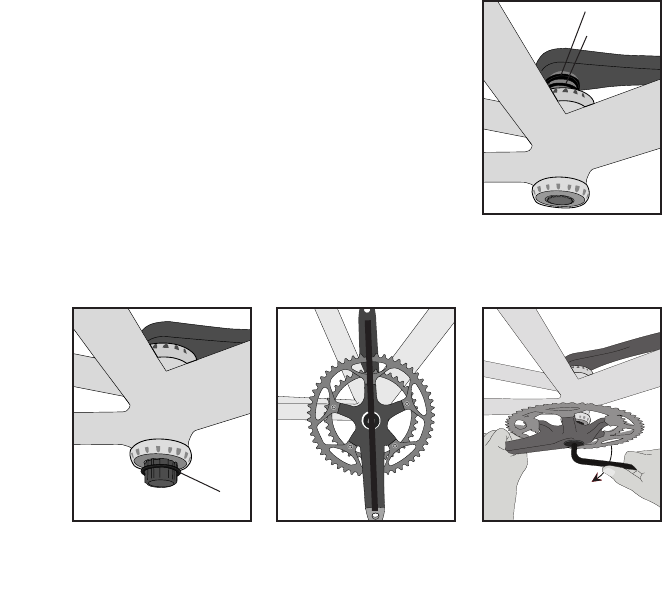
1. Apply a thin film of bicycle grease to the entire axle, including the
splines.
2. Slide the elastomer washer (A, Figure 7) and the 1.0 mm spacer (B,
Figure 7) onto the axle until they touch the crank.
3. Gently guide the axle through the left cup (Figure 7). Keep the axle
centered and aligned.
If needed to push the axle through, lightly tap the axle end with a plastic
mallet.
Make sure the axle is aligned with the right cup. If misaligned, the axle could
damage the bearings.
4. Slide the elastomer washer onto the axle (Figure 8) until it touches
the cup.
5. As you hold the right crank at 180 degrees with the left crank
(Figure 9), push the crank onto the axle splines. When the crank
stops (a shallow distance) turn the axle bolt to start the threads.
6. Tighten the axle bolt until the crank stops, between approximately
360-600 lb•in (34- 68 N•m).
Rotate the cranks so that one of the arms
is parallel the seat tube. Put one hand on the
crank arm and one hand on the seat tube, and
attempt to move the crank arm laterally toward
and away from the seat tube. Then spin the
cranks. Some seal drag is normal, especially
with new bearings.
If the crank feels or sounds loose, or if the
motion stops abruptly or you hear a grinding
noise coming from the bearings, refer to the
Troubleshooting chart.
Figure 0 Tighten the crank
bolt
Figure Insert the axle with
the washers
A: Elastomer washer
B: .0 mm spacer washer
A
B
Figure 8 Attach the right
elastomer (A)
A
Figure 9 Align the right
crank at 80 degrees to the
left crank
Installation















